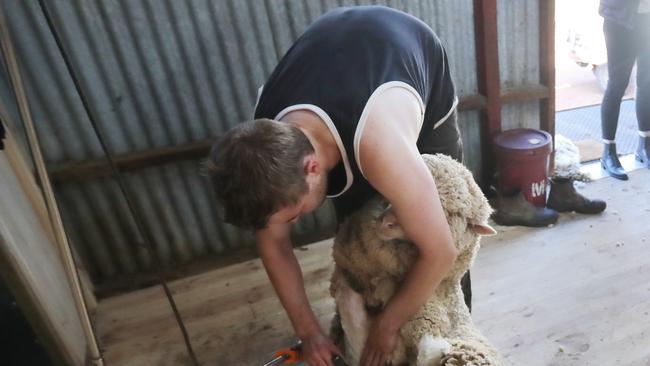Just 120 new shearers delivered from AWI shearing training program
An AWI shearing program, costing millions in grower funds, has delivered just 120 new staff considered up to scratch.
A shearer and shedhand training program costing more than $2.8 million in grower funds has officially delivered just 120 new staff considered up to scratch.
But the shearing industry maintains the program is worth it and says the results should be measured by more than just how many new shearers come into the industry.
Australian Wool Innovation spent $2,821,211 on the Shearer and Wool Handler Training Program in 2023-24, with the money going to instructors but also public relations companies, local councils and Advanced Lifestyle Training, a company that supplies hydration products.
The program’s goal was to attract 250 new entrants who attained “a level of competency to obtain AWI shearer or wool handler/shearing tool kits”.
But the program fell short in the past financial year, with just 120 kits given out across Australia: 39 in NSW, 30 in Western Australia, 22 in Victoria, 16 in South Australia, and 11 in Tasmania.

An AWI spokesman said there had been fewer opportunities for full-time learner shearers with contracting teams, with less demand for staff than predicted.
The spokesman said there had instead been a strong focus on improving shearers who had already received learner toolkits, to retain and improve their skills as professional shearers.
A cost-benefit analysis by AWI of the 2022-23 training program showed a $6.05 return for every dollar spent in the shearer and wool handler training program, through “increased productivity and increased income due to less wool wastage and less costs related to wool shearing and wool handling”.
Shearing Contractors Association of Australia chief executive Jason Letchford said he believed the number of shearing kits given out “does not reflect the overall picture” of the impact of the AWI training.
“Some of their (AWI) money funds shearing schools for new starters but a lot of it is for in shed coaching for existing workers, which is money very well spent,” Mr Letchford said.
“We have seen productivity levels increase as a result of the continued effort to train and there is significant HR value in in-shed training by investing in them.”
Mr Letchford said due to the transient nature of the shearing industry, it was important for AWI to fund training “as employers are reluctant to invest in staff who can quickly move on to other employers”.

The most up to date number of shearers dates back to the 2021 Australian Bureau of Statistics census, which put the figure at 2395.
Mr Letchford said the industry lost 1778 shearers between 2006 and 2021 and this attrition rate reflected why it was vital to have shearer training.
“A consistent investment in training facilitates attraction and retention to the industry,” he said.




